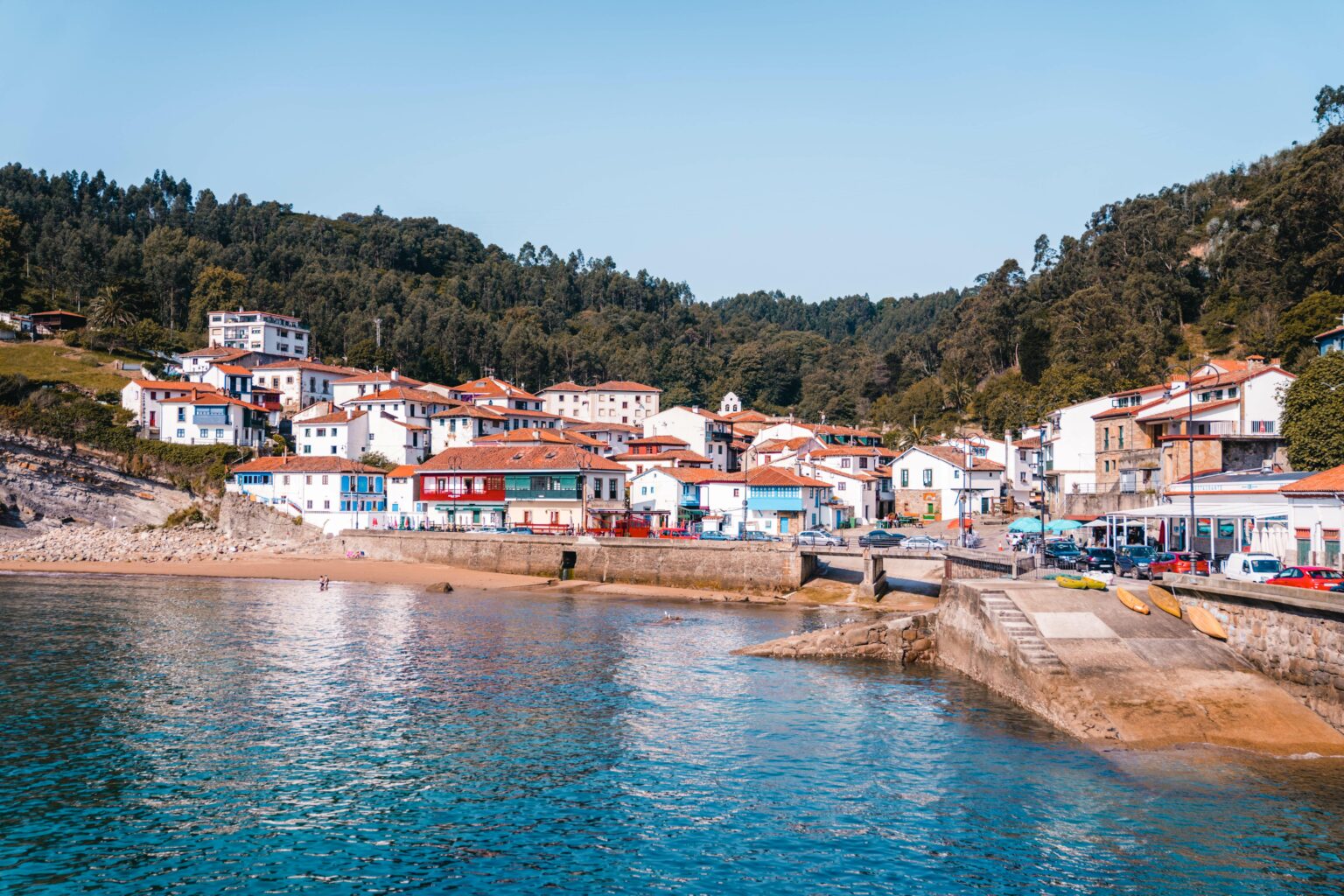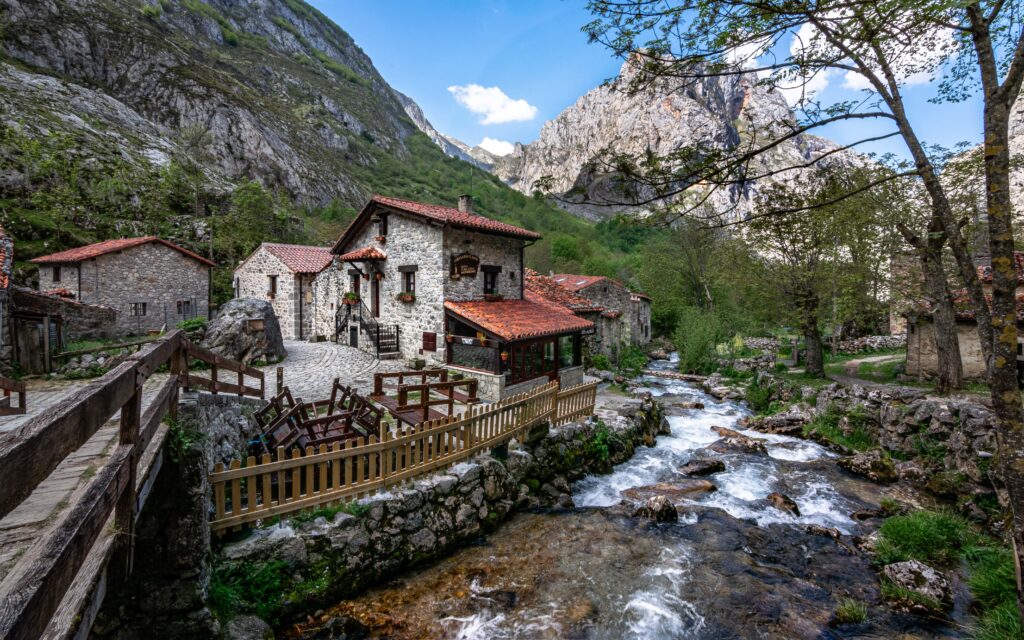- Bree Recker
Though a highly popular destination among Spaniards thanks to its natural beauty and incredible food, Asturias probably isn’t the first place that comes to mind when most people plan a trip to Spain.
However, this enchanting region is one of the top destinations in Spain for nature lovers. A third of Asturias is environmentally protected land, meaning that the area offers expansive natural beauty to be discovered. Plus, thanks to its northern location and oceanic climate, it has some of the coolest temperatures in Spain, making it a great place to visit during the summer months. While the rest of Spain is scorching on crowded beaches under the August sun, you can blissfully stroll through forests and mountain trails in Asturias without encountering another soul.
Come and witness nature's most exquisite rendezvous: Where the sea meets the majestic mountains of Asturias!
MAKE YOUR WAY ALONG THE COSTA VERDE
The Costa Verde (Green Coast) runs along the Cantabrian Sea and is lined with what are hands-down some of the best beaches in Spain. If you visit just one beach in Asturias, it should be Playa del Silencio. It is perhaps the most beautiful beach in the region, if not the entire country, thanks to its remote location and stunning quartzite cliffs.
There’s another pair of unique beaches you can’t miss while traveling the Costa Verde: Playa de Gulpiyuri and Playa de Cobijer, both inland beaches that don’t reach the sea. However, these two interior beaches fill with seawater during high tide, creating one of the most unique experiences you’ll find in Asturias. You can explore dozens of beaches in this northern region; our other recommendations include Playa de Barayo, Playa Cuevas del Mar, and the Playas Gemelas de Ballota y Andrín. It is a never-ending list!

Aside from beaches, there are several stunning capes that you will want to check out during your trip. First, head to Cabo Vidío and its lighthouse, where you will get the sense that you’re looking out over the ends of the Earth. Be sure to also visit Cabo de Peñas and Cabo de Busto in the area, which also has stunning lookout points and lighthouses.
EXPLORE NATURAL PHENOMENA AND TINY VILLAGES
The Costa Verde is known for its natural landmarks, which is part of why we consider it one of Spain’s best destinations. First, you can see seawater shooting through the cracks and holes in the coastline’s limestone cliffs at Bufones de Pría. Like the inland beaches we mentioned above, it’s best to visit at high tide to get the full experience. Also worth discovering is El Castro de las Gaviotas, a natural arc formation that shoots up out of the sea. This rock formation is located just a few kilometers from Playa de Gulpiyuri.

Finally, you can’t miss the charming pueblos that line this pristine coast. We recommend stopping in Cudillero, which is easily one of the most picturesque villages in Spain. Also, be sure to stop in Lastres, Luarca, and Tazones. These towns stand out for their stunning seaside settings, and all have populations of less than 5,000 residents (less than 200 in Tazones)!
TRAVEL INLAND AND ROAM THE COUNTRYSIDE
If you leave the coast and head farther inland, plenty remains to discover. The Asturian countryside is where you’ll find some of the smallest villages you have probably ever visited. Taramundi, for example, is a quaint stone village set among rich greenery with a population of less than 600.
And Bulnes is one of the most exciting places you could ever see when you travel to Spain. This little town is one of the most isolated villages in the country, and it is one of the few towns in Spain that cannot be reached by car. You must walk or take a cable car to get to this less than 50 residents Pueblo!

Finally, you’ll discover natural wonders throughout the Asturian countryside. El Santuario de Covadonga y Lagos de Covadonga are both a must-see. The spectacular sanctuary and basilica of Covadonga are located a little over 10 kilometers (6 miles) from a pair of glacial lakes, Enol and Ercina. The Lagos de Covadonga are located in Picos de Europa National Park, home to an impressive 20-kilometer (12-mile) long mountain range.
Speaking of lakes, you should also visit Los Lagos de Saliencia, a group of post-glacial lakes you’ll find in Somiedo Natural Park. This group of four lakes comprises Calabazosa, Cerveriz, Laguna de Almagrera, and La Cueva. You can hike between the lakes on well-marked paths, and we recommend giving yourself plenty of time to explore this spectacular park.
DISCOVER THE RICH CULINARY OFFERING OF ASTURIAS
A trip to Asturias isn’t complete without enjoying one of the best parts of the region: its food. The most traditional dish in Asturias is fabada, a hearty bean stew made with large white beans, chorizo, and morcilla (blood sausage). You also can’t leave without trying cachopo, typically prepared by placing sliced ham and cheese between two veal fillets, breading, and frying.
Asturias is also known for its cheese (it has been called “the Land of Cheese”). There are dozens of varieties of cheese that are particular to Asturias, which can be made from cow’s, goat’s, and sheep’s milk. Queso casín is a protected designation of origin (PDO) cheese produced in Caso, Piloña, and Sobrescobio regions. Also, be sure to try cabrales, a traditional Asturian blue cheese.

Finally, if you’re going to indulge in any libations in Asturias, be sure to order a bottle of sidra. Asturian cider is slightly sparkling, and rather than having a sweet taste, as many other ciders do, it is a dry and acidic beverage similar to freshly pressed apple juice.
It’s time to start planning that trip to Spain and book your accommodations in Asturias. From breathtaking beaches to quaint villages and unbelievable food, Asturias is one of those vacations you’ll never forget. And its large number of protected natural spaces makes it an ideal spot for outdoor enthusiasts. Discover one of Spain’s top destinations and explore Asturias’s unmatched beauty.

